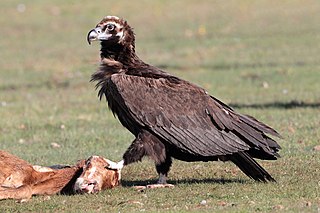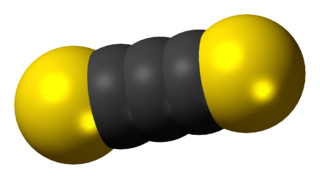Aminopyridine may refer to any of several chemical compounds:
- 2-Aminopyridine
- 3-Aminopyridine
- 4-Aminopyridine (4-AP), also known as fampridine or dalfampridine
Aminopyridine may refer to any of several chemical compounds:
A chemical formula is a way of presenting information about the chemical proportions of atoms that constitute a particular chemical compound or molecule, using chemical element symbols, numbers, and sometimes also other symbols, such as parentheses, dashes, brackets, commas and plus (+) and minus (−) signs. These are limited to a single typographic line of symbols, which may include subscripts and superscripts. A chemical formula is not a chemical name, and it contains no words. Although a chemical formula may imply certain simple chemical structures, it is not the same as a full chemical structural formula. Chemical formulae can fully specify the structure of only the simplest of molecules and chemical substances, and are generally more limited in power than chemical names and structural formulae.

Pyridine is a basic heterocyclic organic compound with the chemical formula C5H5N. It is structurally related to benzene, with one methine group (=CH−) replaced by a nitrogen atom. It is a highly flammable, weakly alkaline, water-miscible liquid with a distinctive, unpleasant fish-like smell. Pyridine is colorless, but older or impure samples can appear yellow. The pyridine ring occurs in many important compounds, including agrochemicals, pharmaceuticals, and vitamins. Historically, pyridine was produced from coal tar. Today it is synthesized on the scale of about 20,000 tons per year worldwide.
Quinolone may refer to:
Nitrogen oxide may refer to a binary compound of oxygen and nitrogen, or a mixture of such compounds:
Copper sulfate may refer to:

Saxitoxin (STX) is a potent neurotoxin and the best-known paralytic shellfish toxin (PST). Ingestion of saxitoxin by humans, usually by consumption of shellfish contaminated by toxic algal blooms, is responsible for the illness known as paralytic shellfish poisoning (PSP).

An avicide is any substance which can be used to kill birds.

4-Aminopyridine (4-AP, fampridine, dalfampridine) is an organic compound with the chemical formula C5H4N–NH2. The molecule is one of the three isomeric amines of pyridine. It is used as a research tool in characterizing subtypes of the potassium channel. It has also been used as a drug, to manage some of the symptoms of multiple sclerosis, and is indicated for symptomatic improvement of walking in adults with several variations of the disease. It was undergoing Phase III clinical trials as of 2008, and the U.S. Food and Drug Administration (FDA) approved the compound on January 22, 2010. Fampridine is also marketed as Ampyra (pronounced "am-PEER-ah," according to the maker's website) in the United States by Acorda Therapeutics and as Fampyra in the European Union, Canada, and Australia. In Canada, the medication has been approved for use by Health Canada since February 10, 2012.
Butyne (C4H6) may refer to either of two isomeric organic chemical compounds:

A chemical substance is a form of matter having constant chemical composition and characteristic properties. Some references add that chemical substance cannot be separated into its constituent elements by physical separation methods, i.e., without breaking chemical bonds. Chemical substances can be simple substances, chemical compounds, or alloys. Chemical elements may or may not be included in the definition, depending on expert viewpoint.
The molecular formula C5H6N2 may refer to:

Carbon subsulfide is an inorganic chemical compound with the formula C3S2. This deep red liquid is immiscible with water but soluble in organic solvents. It readily polymerizes at room temperature to form a hard black solid.
Dioxin may refer to:

A chemical compound is a chemical substance composed of many identical molecules composed of atoms from more than one element held together by chemical bonds. A molecule consisting of atoms of only one element is therefore not a compound.

2-Aminopyridine is an organic compound with the formula H2NC5H4N. It is one of three isomeric aminopyridines. It is a colourless solid that is used in the production of the drugs piroxicam, sulfapyridine, tenoxicam, and tripelennamine. It is produced by the reaction of sodium amide with pyridine, the Chichibabin reaction.

The organic compound 3-pyridylnicotinamide (3-pna), also known as N-(pyridin-3-yl)nicotinamide, is a kinked dipodal dipyridine that is synthesized through the reaction of nicotinoyl chloride and 3-aminopyridine. The nitrogen atoms on its pyridine rings, like those of its isomer 4-pyridylnicotinamide, can donate their electron lone pairs to metal cations, allowing it to bridge metal centers and act as a bidentate ligand in coordination polymers. It can be used to synthesize polymers that have potentially useful gas adsorption properties.

Pyridyne in chemistry is the pyridine analogue of benzyne. Pyridynes are the class of reactive intermediates derived from pyridine. Two isomers exist, the 2,3-pyridine (2,3-didehydropyridine) and the 3,4-pyridyne (3,4-didehydropyridine). The reaction of 3-bromo-4-chloropyridine with furan and lithium amalgam gives 1,4-epoxy-dihydroquinoline through the 2,3-pyridyne intermediate. The reaction of 4-bromopyridine with sodium in liquid ammonia gives both 3-aminopyridine and 4-aminopyridine through the 3,4-pyridyne intermediate and an E1cB-elimination reaction.
The International Union of Pure and Applied Chemistry (IUPAC) has published four sets of rules to standardize chemical nomenclature.
Sodium hypobromite is the inorganic compound with the formula NaBrO. It is usually obtained as the pentahydrate, so the material that is usually called sodium hypobromite has the formula NaOBr • 5H2O. It is a yellow-orange solid that is soluble in water. It is the Na+ salt of OBr-. It is the bromine analogue of sodium hypochlorite, the active ingredient in common bleach. In practice the salt is usually encountered as an aqueous solution.

2,2′-Dipyridylamine is an organic compound with the formula (C5H4N)2NH. It consists of a pair of 2-pyridyl groups (C5H4N) linked to a secondary amine. The compound forms a range of coordination complexes. Its conjugate base, 2,2′-dipyridylamide, forms extended metal atom chains.